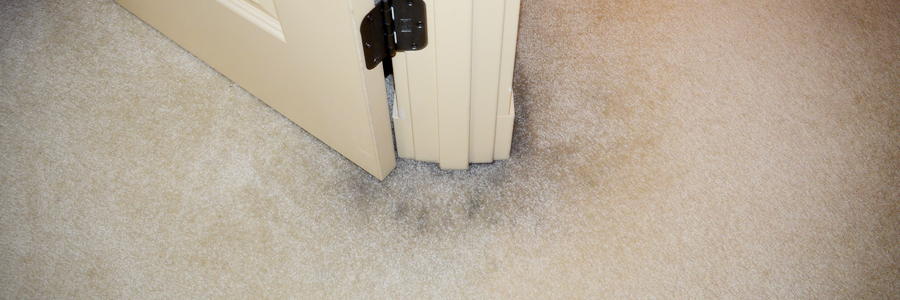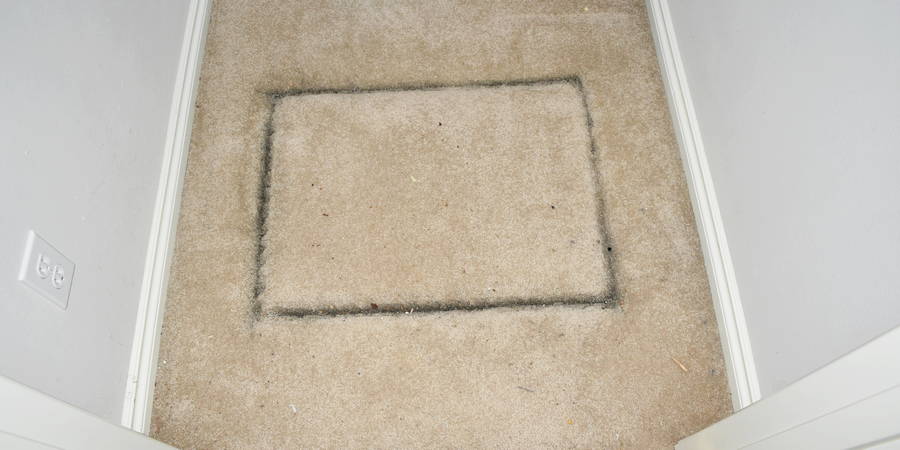What causes black lines on the edges of carpeting?

Often confused as mold growth, this dark staining is the result of several surprising phenomenon in your home. The most common cause is filtration. Much like a filter, the carpet allows air to pass through the fibers, but traps the particles before they can exit. Over time, these particulates build up in the carpet fibers, creating dark lines and spots. This is why you’ll never see ghosting in the middle of a room or hallway. There is no entry point for the airflow. Air flow occurs through the gaps in the framing at the edges of the walls.
Many customers have asked if this is due to poor vacuuming – perhaps their vacuum simply doesn’t perform well on the edges. In our experience, no amount of vacuuming will fix the problem. The particulates are not simply dirt, but usually soot and other contaminants capable of permanently staining the carpet.
Below is a great example of carpet filtration/ghosting. Due to the stack effect, air is constantly moving upward from the crawlspace into the first floor of the home. The air cannot move directly through the subfloor, so it seeks out cracks in the framing. This access hatch provides an easy pathway for the air flow. As the air moves through the carpeting, the particles are stripped out and deposited on the fibers.
How to stop carpeting ghosting & staining
Preventing carpeting ghosting is straightforward. You need to eliminate the airflow through the framing beneath the carpeting. In most cases, this occurs where the subfloor meets the wall framing. Unfortunately, there’s no way to do this without removing the carpeting, so it’s best to wait until you’re install new carpeting.
After the carpeting has been removed, air sealing is straightforward. First, look for a small gap between the bottom of the sheetrock and the subfloor. Occasionally, the sheetrock sits directly on the floor, but in most homes, it sits up about 1/2″, leaving a gap. Inside of this gap you’ll see where the bottom plate of the wall framing sits on the subfloor. Your goal is to seal the crack between the framing and the subfloor. Regular latex caulking is sufficient. Once it’s dry, install the new carpeting.
*Heads up – I earn a small commission on sales through Amazon links. This helps cover the expense of running the website (and answering your questions!)

